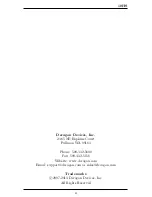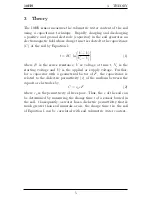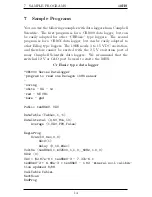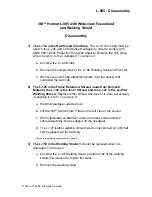
10HS
6
CALIBRATION
any sensor excitation between 3 and 15 V DC.
V W C
(m
3
/
m
3
) = 2
.
97x10
−
9
∗
mV
3
−
7
.
37 x 10
−
6
∗
mV
2
+ 6
.
69 x 10
−
3
∗
mV
−
1
.
92
(6)
Due to the complexity of soils, the accuracy of the VWC measure-
ment can be poor despite an accurate measurement for dielectric
permittivity. Some examples of this are highly compacted soils, very
low bulk density soils, soils with abnormally high organic matter con-
tent, and soils with high-dielectric mineral composition (e.g. TiO2
sands). Additionally, the accuracy of the 10HS may suffer in soils
with very high electrical conductivity (
>
10 dS/m solution EC). In
these soils, it may be necessary to calibrate the 10HS to your specific
soil type. With a soil-specific calibration, the accuracy of the VWC
measurements will be improved to 1 to 2% in any soil or other porous
medium.
If you are interested in a soil-specific calibration for your 10HS,
there are two options available. You can create your own sensor
calibration by following the directions in our application note titled
Calibrating ECH2O soil moisture probes from the Decagon website
(
http://www.decagon.com
) and following the step-by-step instruc-
tions for calibrating your soil moisture sensors. Since some users do
not have the time or equipment to conduct their own calibration,
Decagon now offers a service providing soil specific calibrations to
our customers.
This calibration service also applies to non-soil materials, such as
compost, potting materials, etc. Contact Decagon for more informa-
tion on this service ([email protected]).
13






































